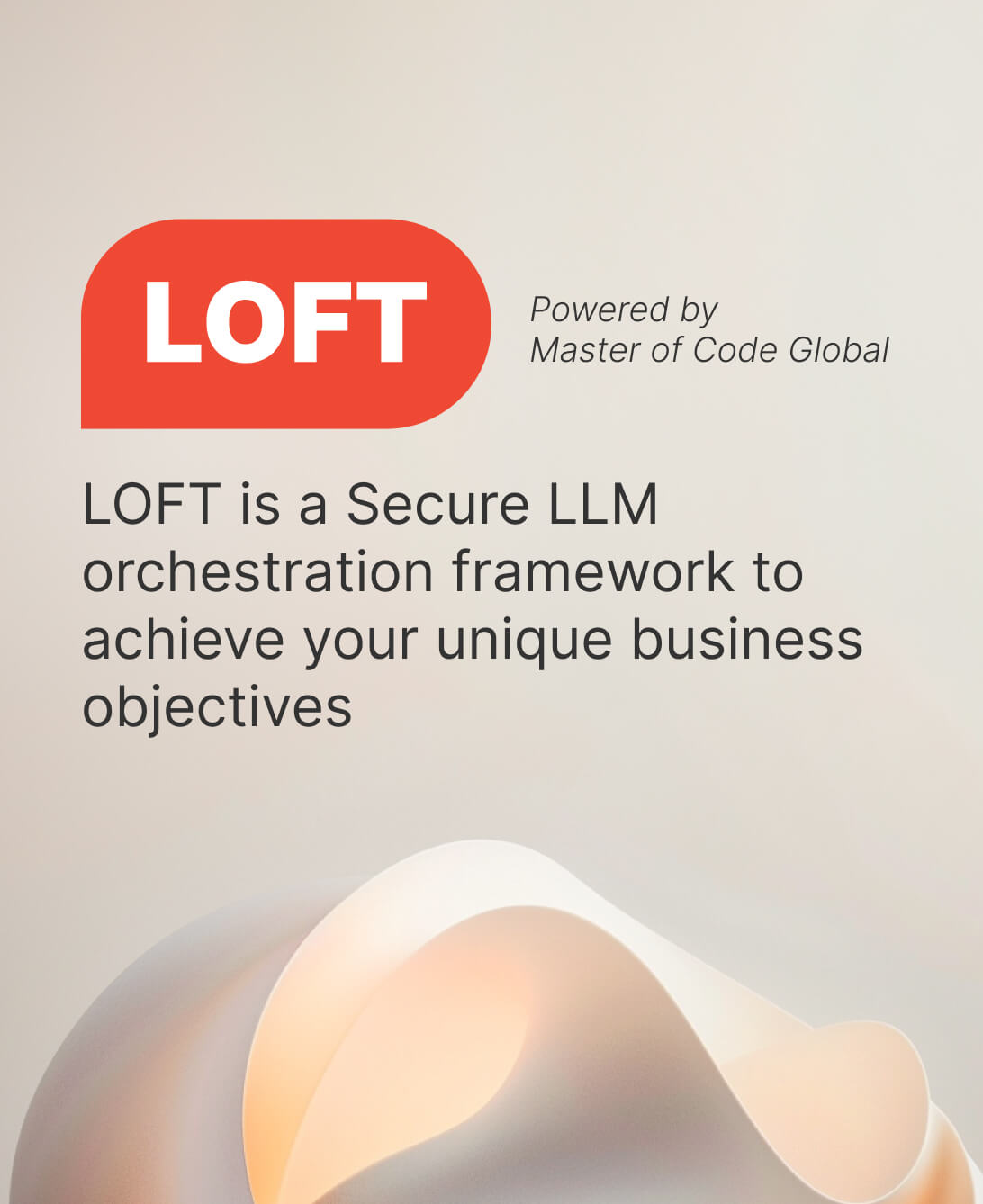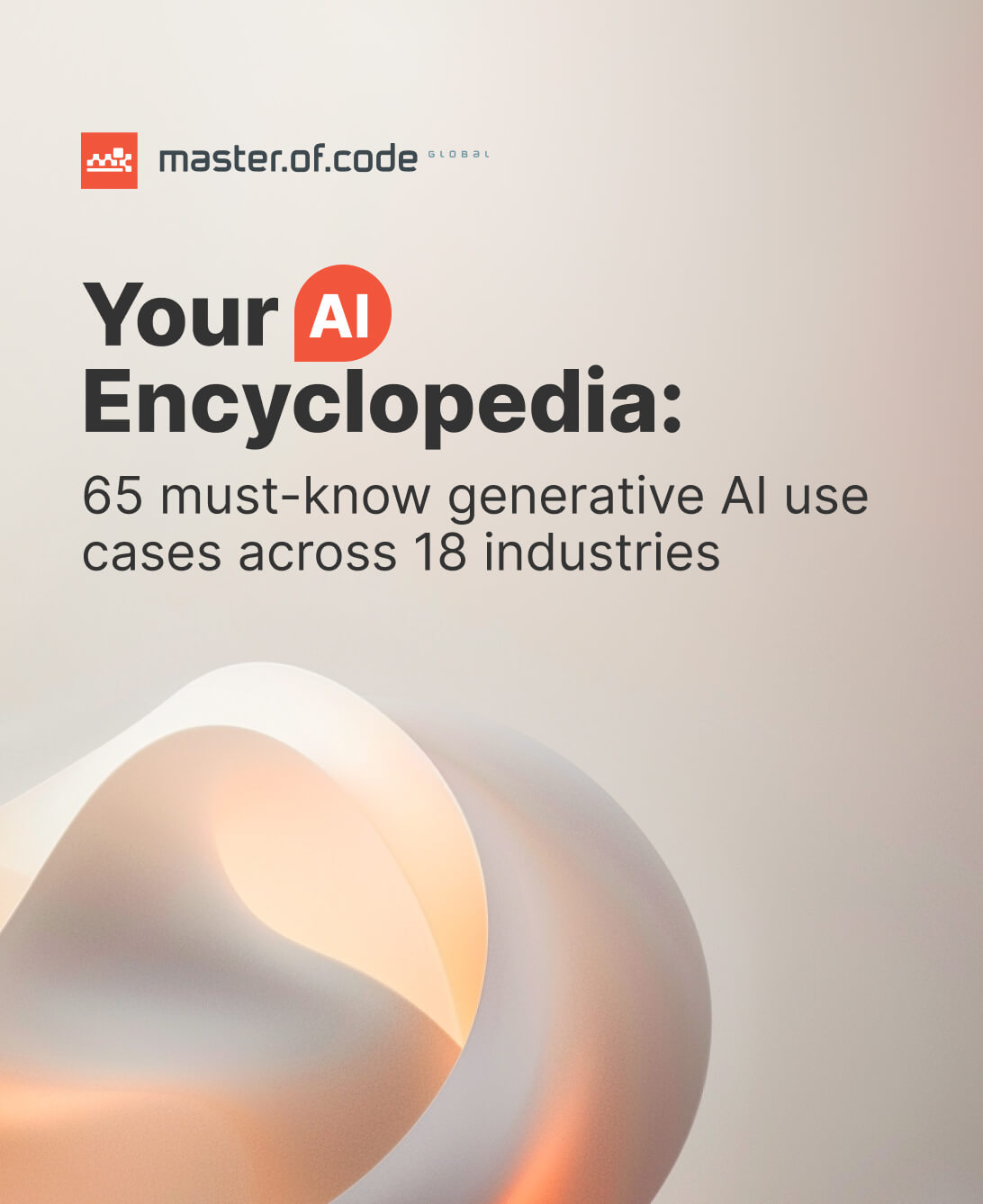Esso Entertainment Chatbot
Helping Canadians fuel the love of their favourite sport, hockey.
Esso is an industry leader in responsibly developing Canada’s energy resources. They’re the nation’s largest petroleum refiner, a major producer of crude oil and natural gas, and the leading fuels marketer from coast to coast.
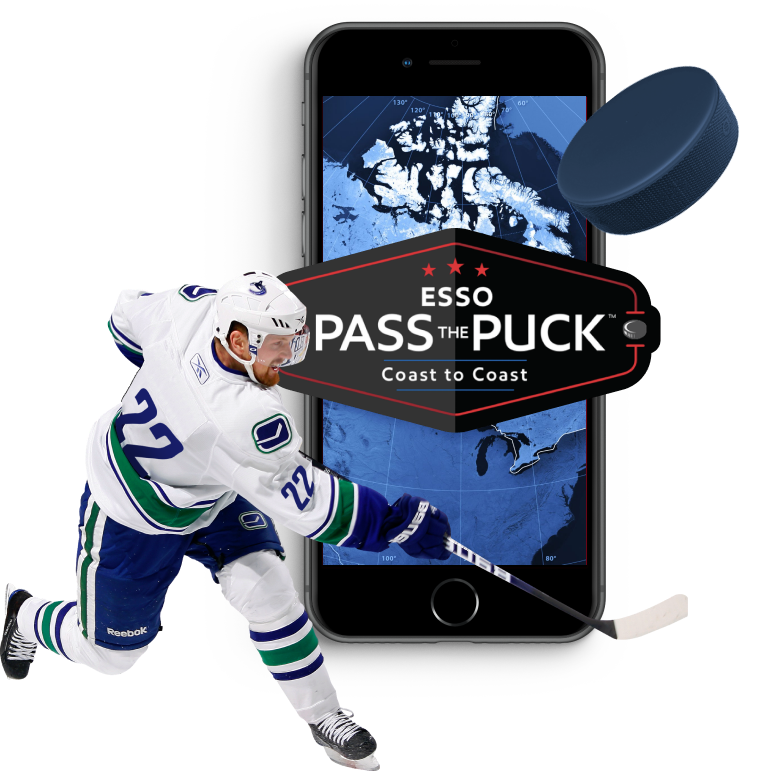
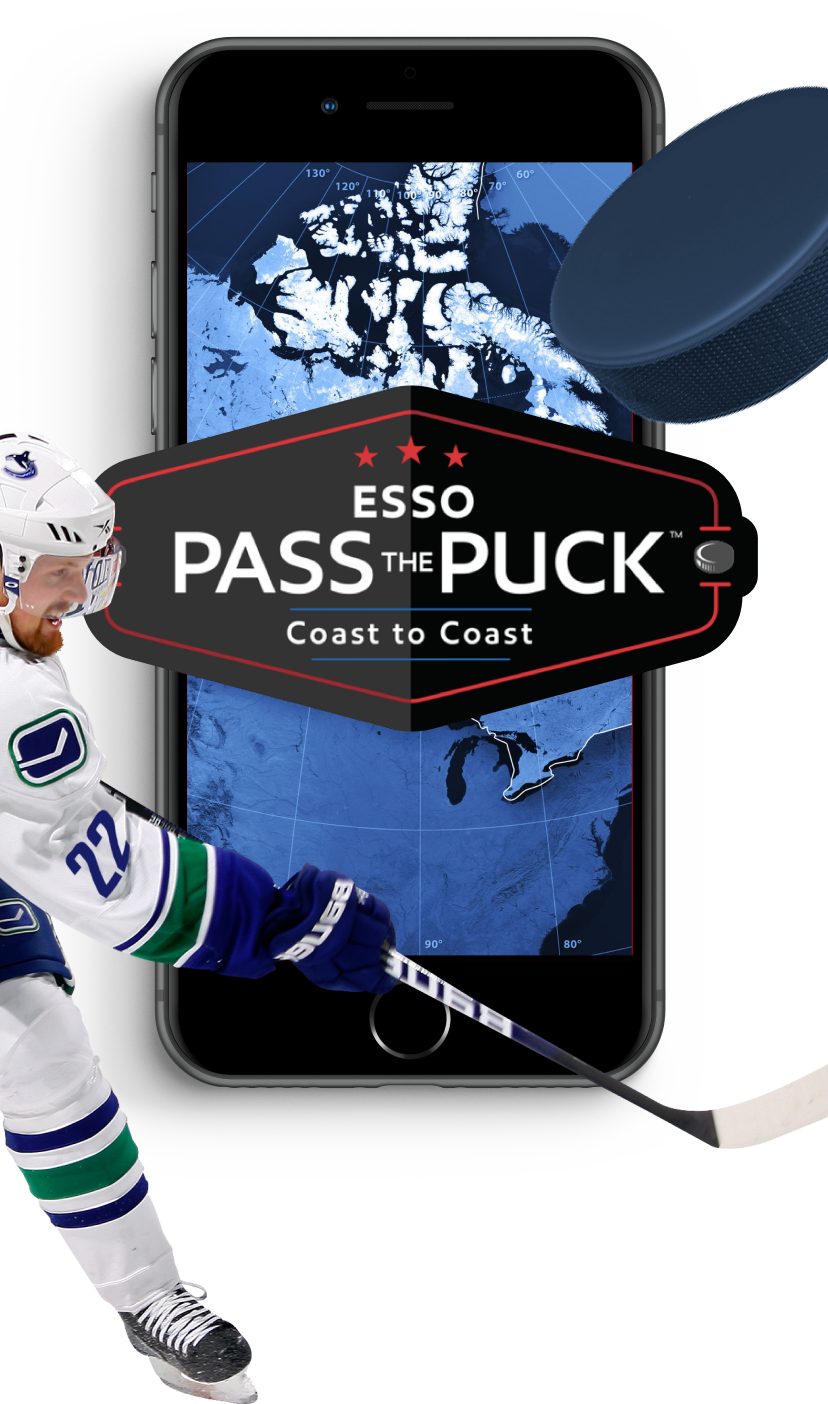
-
83%
Sign-up conversion rate
-
94%
Player retention rate
-
772,970
Passes were made nationwide
Challenge
As the official fuel of the National Hockey League (NHL), Esso wanted to find a way to help Canadians coast to coast, celebrate their passion for the game and the start of the NHL 2019 season.
As an innovative player, they wanted a unique way to entice hockey fans to be part of the game while promoting the Esso brand.
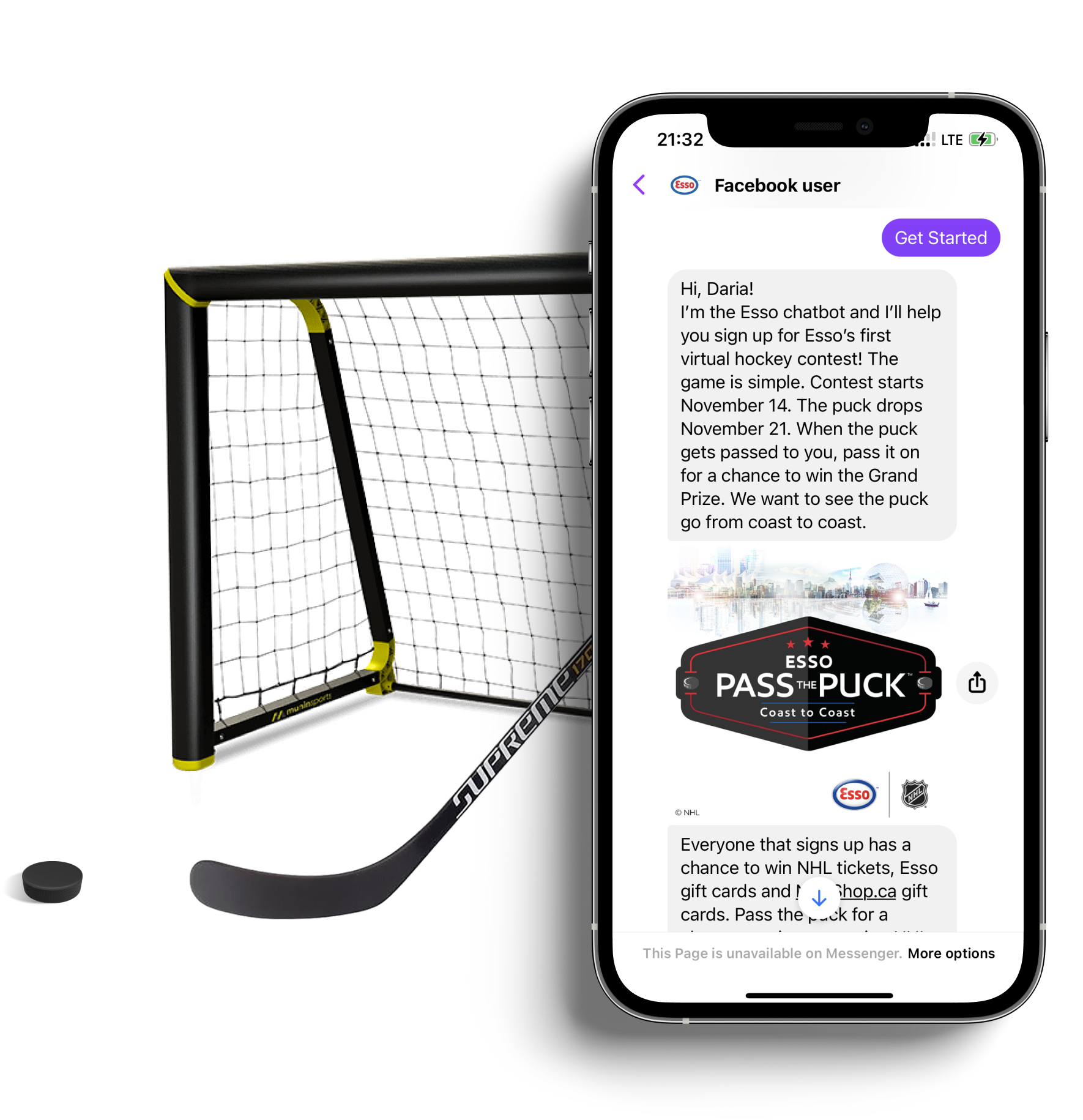
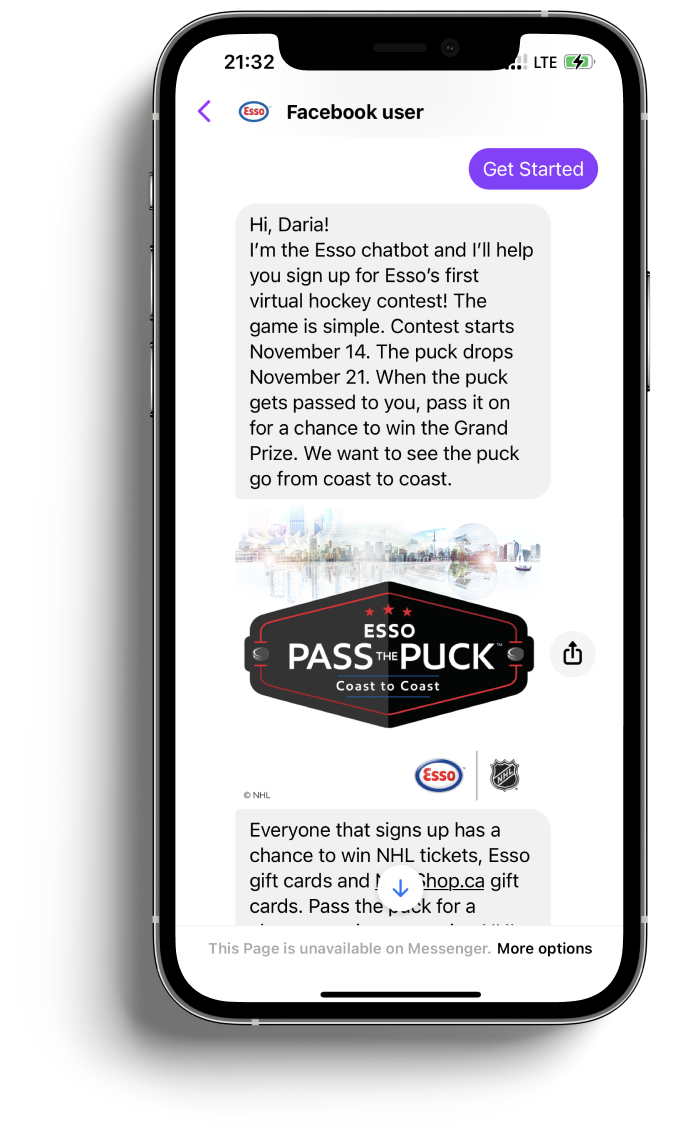
What We Created
Bilingual Entertainment Chatbot
Master of Code in collaboration with Esso’s agency of record BBDO Canada, created the first-ever bilingual (English and French) conversational hockey ‘Pass the Puck’ game as a Messenger Chatbot.
The goal: to get as many Canadians playing the game and ultimately have the puck travel to all of the nation’s three coastlines.
How We Did It
The bilingual campaign was executed into two phases. The first, was to entice users to sign-up to play the Pass the Puck game through content and social ad marketing. These ads would lead users to the Messenger flow that introduced the game, explained how Pass the Puck worked and encouraged users to sign-up to play.
Once the registration period had ended, the game started two weeks later. Hundreds of pucks digitally 'dropped' to select signed up users.
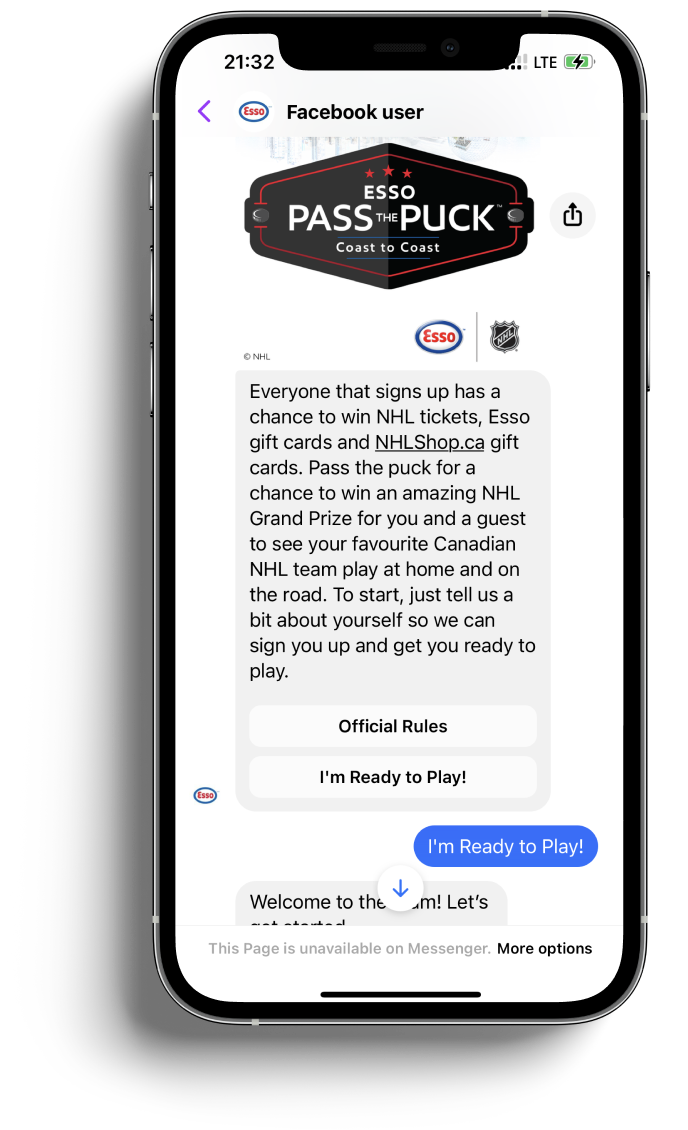
How The Game Worked
Registration Period
The first set of players received a push notification on Messenger that the game had begun and they received the first puck and they needed to pass it. With every puck pass, players had a chance to win Esso and NHL gift cards, swag, and prizes.
Additionally, each pass would give them an entry towards the Grand Prize, two trips for 2 to see their favorite Canadian NHL team play a home and away game of their choice.
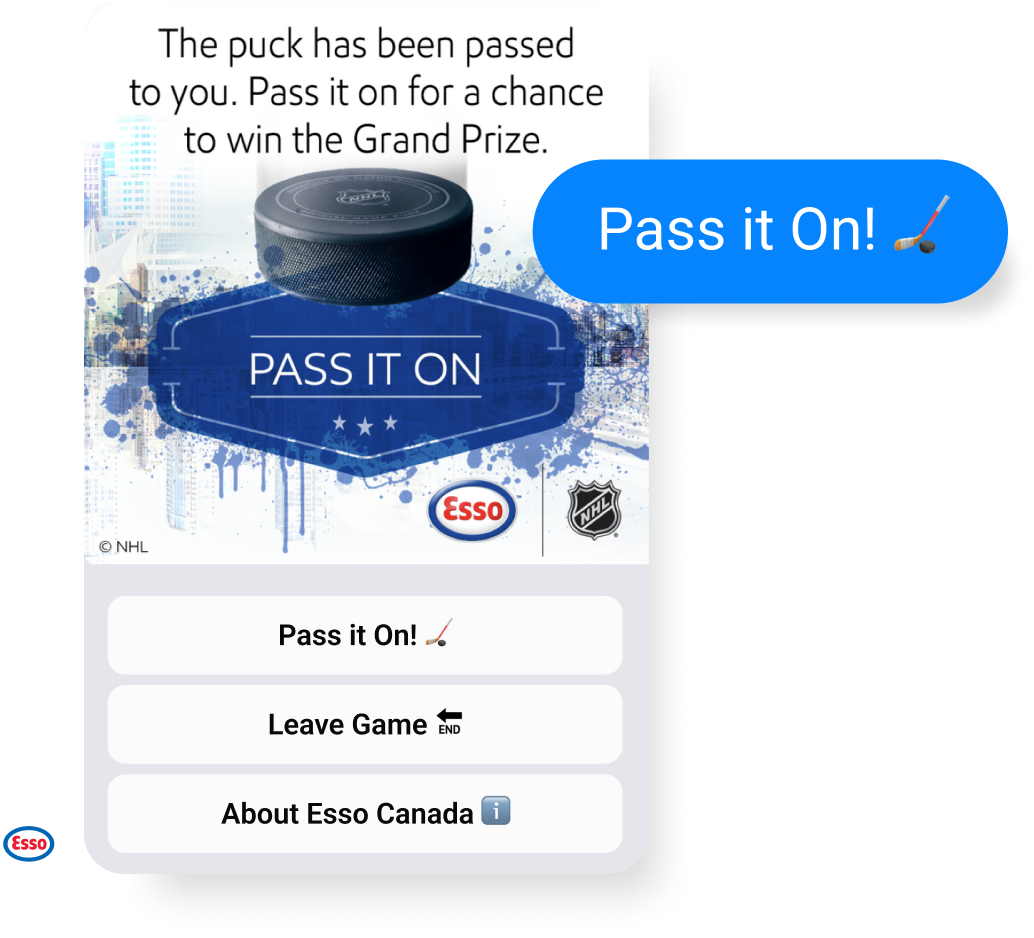
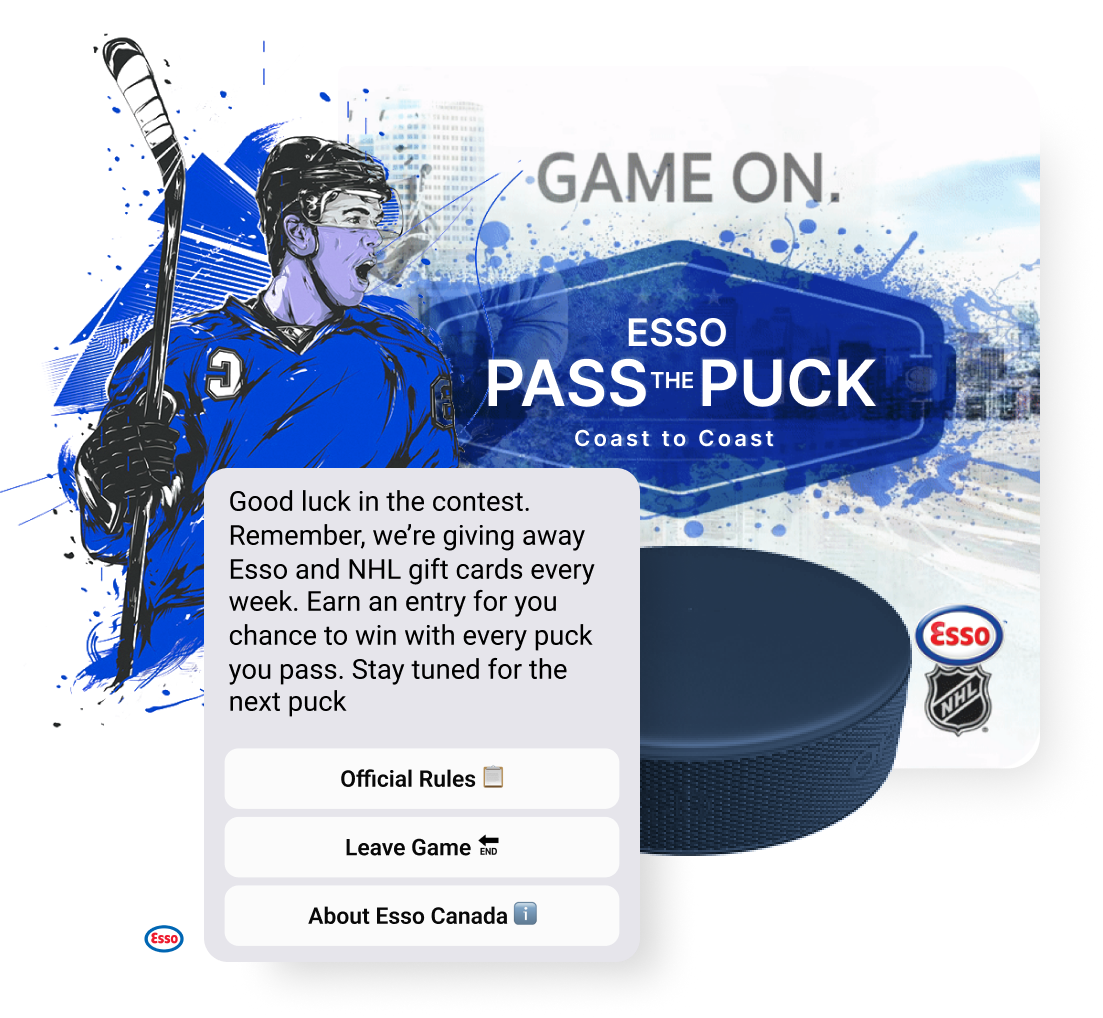
Game Play Period
After the initial set of players passed the first sets of pucks, every puck the subsequent player received would show how many kilometers it had traveled to them and the name of the Canadian town or city the puck was last in. This element of connection with fellow players was designed to spark further delight, engagement, and social shares.
Technologies We Leveraged
- Google API for zip detection
- Post code API
- User-centric bilingual conversational design for English and French users
- Custom event tracking for reporting
- Dialogflow bot platform
- Robust NLP training to answer contest and game questions
Results
During the five-week campaign, more than 84,000 Canadians engaged with the Pass the Puck entertainment chatbot, with 69,896 signing up and 65,416 playing it. This means of all users who signed up, less than 6% left the game during the campaign period. The puck was passed to all three Canadian coasts and all provinces and territories in its first four days of being in production.
Pucks traveled to more than 2,500 towns, the largest being Toronto, ON and the smallest was in Key West No. 70, SK, a town with a population of just 309 people. The puck traveled more than 1,240,000,000 KMs during the period, or about 31,000+ times around the world.
- 83% Sign-up conversion rate
- 94% Player retention rate
- 772,970 Passes were made nationwide
- 51,924 Unique postal codes the puck was passed to
- 1.2 B The puck traveled
- 4 Days To travel to every Canadian province and territory

